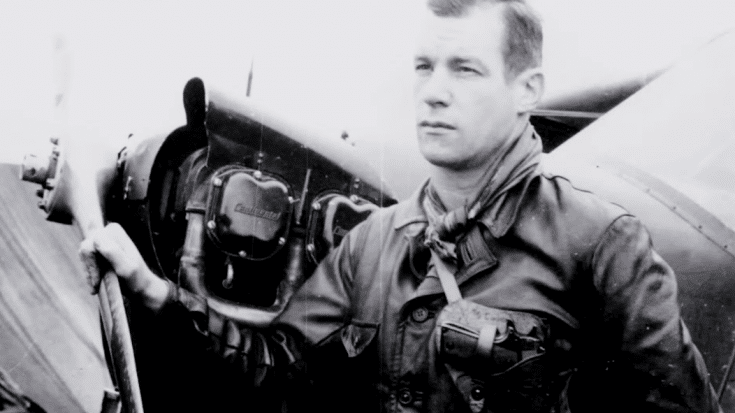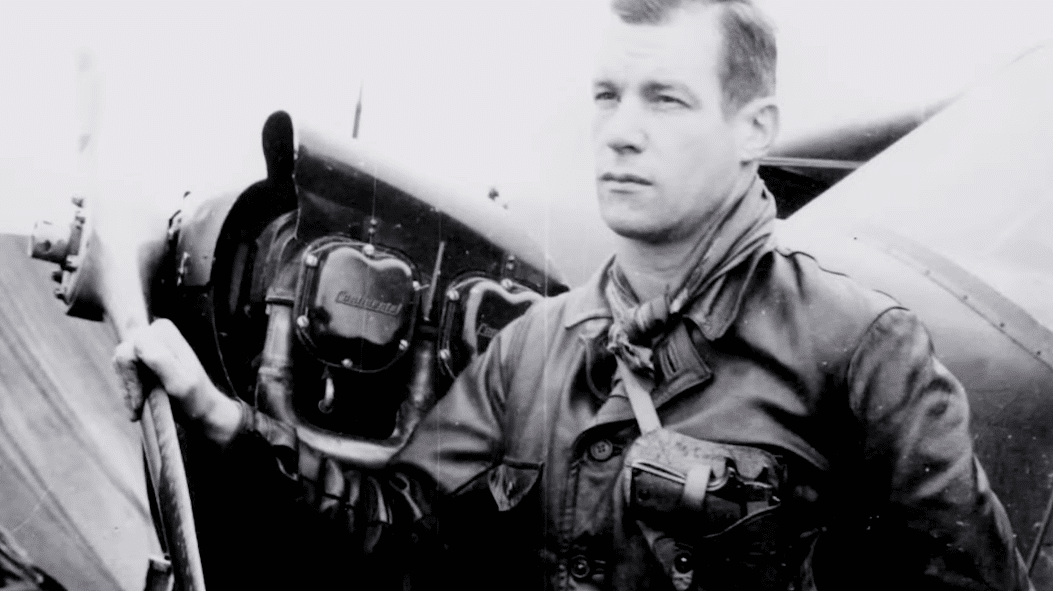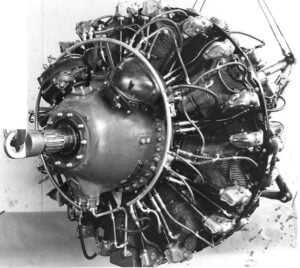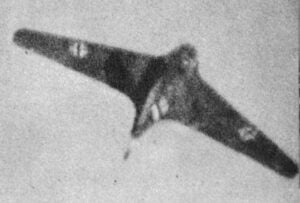The Story of The Fearless and Unconventional WWII Pilot No One Ever Heard Of

WingedWorld / YouTube
World War II produced many heroes, but few were as unconventional as Charles Carpenter. An American pilot, he transformed a light observation plane into a tank-destroying weapon. His name is rarely mentioned in history books, yet his actions on the battlefield were extraordinary. Soldiers gave him the nickname “Bazooka Charlie” because he dived into combat, destroying enemy armor with a plane never meant for battle.
Carpenter was born in Edgington, Illinois, on August 29, 1912. Before the war, he worked as a history teacher, dedicating his life to education. But deep down, he longed for adventure. When the United States entered the war, he felt a duty to serve. Like many men of his generation, he left behind his civilian life and joined the military.

A New Path in Aviation
Initially assigned to the infantry, Carpenter soon realized that he belonged in the sky. He joined the glider corps, a specialized unit that used unpowered aircraft to transport troops and supplies behind enemy lines. It was a dangerous role, but it only fueled his passion for flying. Eventually, he transitioned to piloting the L-4 Grasshopper, a small reconnaissance aircraft used for spotting enemy movements and directing artillery fire.
Unlike fighter pilots who engaged in high-speed aerial battles, Carpenter’s mission required him to fly low over enemy lines, observing and relaying information. But he was not content with merely watching the war unfold. While others saw the Grasshopper as a fragile, unarmed scout plane, he saw an opportunity to take direct action.
The Birth of a Legend
Frustrated with his limited role, Carpenter made an unconventional decision. He began modifying his aircraft, attaching a single bazooka to its wing struts. Finding that one was not enough, he eventually mounted six M1 Bazookas, turning his slow-moving plane into an unexpected attack aircraft. His fellow soldiers thought he was reckless. Flying an unarmored wooden plane directly into enemy territory, targeting heavily armored German tanks, seemed suicidal. But Carpenter believed that speed and firepower were not the only advantages in battle. Surprise and agility could also be weapons.
His strategy was simple: attack from low altitude, fire his rockets, and escape before enemy forces could react. Soon, reports surfaced of a lone scout plane diving into enemy positions, firing rockets at tanks, and disappearing before anti-aircraft guns could respond. His daring approach earned him the nickname “Bazooka Charlie,” and his aircraft, Rosie the Rocketer, became legendary among the troops.

Proving the Impossible
The true test of Carpenter’s strategy came during the Allied advance through France in 1944. As American forces moved toward Germany, German Panzer divisions stood in their way, threatening to slow the offensive. Carpenter saw an opportunity. Flying at dangerously low altitudes, he launched surprise attacks on enemy tanks, often catching them off guard. His tactics confused German tank crews, who never expected to be attacked by a small reconnaissance plane.
His method proved highly effective. Carpenter destroyed multiple German tanks and armored vehicles, proving that even a tiny scout plane could be a deadly threat. His actions earned him admiration from soldiers on the ground, who cheered whenever they saw Rosie the Rocketer soaring overhead. But his missions were not just about firepower. His ability to operate behind enemy lines made him a valuable asset for reconnaissance. He gathered intelligence, identified enemy positions, and provided critical information to Allied commanders.
The Risks of Unorthodox Warfare
Every flight carried immense danger. Enemy fighters, anti-aircraft fire, and even small arms from the ground threatened to bring him down. Unlike traditional attack aircraft, the L-4 Grasshopper had no armor or defensive weapons. A single bullet could have been enough to end his missions for good. But time and again, he returned safely, sometimes with bullet holes in his fuselage but always determined to continue.
His superiors took notice. Instead of reprimanding him for modifying his aircraft without authorization, they recognized his success. Carpenter earned multiple awards, including the Bronze Star and the Air Medal. Despite his growing reputation, he remained humble, insisting that he was simply doing his part in the war. But with every successful mission, his legend continued to grow.
Battling Against the Odds
One of Carpenter’s most famous missions took place during the Battle of Arracourt in September 1944. This was one of the largest tank battles on the Western Front, as American forces faced a major counteroffensive by the German Fifth Panzer Army. The Germans, hoping to halt the Allied advance, deployed heavy armor to the battlefield.
Carpenter played a crucial role in disrupting the German attack. Flying low over enemy positions, he launched a series of surprise assaults, targeting tanks and supply vehicles. His ability to strike quickly and disappear before retaliation made him an unpredictable threat. On several occasions, German forces hesitated to move their tanks for fear that Bazooka Charlie might be waiting nearby.

A Legacy of Innovation
Despite his success, Carpenter’s approach was never officially adopted by the military. The L-4 Grasshopper was not designed for combat, and his modifications remained a personal project. However, his actions demonstrated the power of unconventional tactics. He proved that even the smallest aircraft could play a role in direct combat if used creatively.
After the war, Carpenter returned to civilian life, resuming his career as a teacher. Unlike many war heroes, he did not seek fame or recognition. He simply moved on, leaving behind a story that remains one of the most unique and daring of the war. While his name may not be widely known, the impact of his bold actions lives on in military history.



















